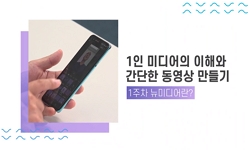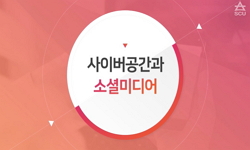Amulets serve as a primal manifestation of human aspirations within folk beliefs. Utilizing written forms, imagery, symbols, and other expressions, amulets embody the intent to repel negative energies and confer blessings. The rise of communication pl...
http://chineseinput.net/에서 pinyin(병음)방식으로 중국어를 변환할 수 있습니다.
변환된 중국어를 복사하여 사용하시면 됩니다.
- 中文 을 입력하시려면 zhongwen을 입력하시고 space를누르시면됩니다.
- 北京 을 입력하시려면 beijing을 입력하시고 space를 누르시면 됩니다.
https://www.riss.kr/link?id=A108743264
- 저자
- 발행기관
- 학술지명
- 권호사항
-
발행연도
2023
-
작성언어
Korean
- 주제어
-
등재정보
KCI등재
-
자료형태
학술저널
-
수록면
77-100(24쪽)
- 제공처
-
0
상세조회 -
0
다운로드
부가정보
다국어 초록 (Multilingual Abstract)
This study aimed to comprehend the impact of cognitive attributes (shared experiences, aesthetic appeal, and values) and informational characteristics (trust, enjoyment, interactivity) on the intent to use amulets through social media. Using structural equation modeling, data from 213 participants were analyzed. The findings unveiled that all facets of cognitive attributes and informational characteristics significantly influenced attitudes toward amulet usage, which in turn significantly impacted the intention for continuous amulet usage. Moreover, a mediating effect was observed between attitudes and attachment. These results underscore that social media users for amulet-related purposes share their experiences, leading to perceptions of enjoyment and aesthetic gratification. Nevertheless, it is important to acknowledge the study's limitation in sample composition, primarily involving Buddhist adherents. Hence, future research should delve into the distinctions between traditional and social media-driven amulet procurement.
Amulets serve as a primal manifestation of human aspirations within folk beliefs. Utilizing written forms, imagery, symbols, and other expressions, amulets embody the intent to repel negative energies and confer blessings. The rise of communication platforms like social media has facilitated the accessibility of amulets' positive effects. Investigating the avenues and attitudes surrounding amulet acquisition offers insights into individuals' perceptions and attributions of significance to these protective tokens. Such inquiries illuminate the broader societal implications of amulets and mystical beliefs, and also invite an exploration of the role modern mediums, such as social media, play in this context. Social media and online platforms expedite the dissemination of information and beliefs, thus facilitating the widespread propagation of various amulets and superstitious elements.
This study aimed to comprehend the impact of cognitive attributes (shared experiences, aesthetic appeal, and values) and informational characteristics (trust, enjoyment, interactivity) on the intent to use amulets through social media. Using structural equation modeling, data from 213 participants were analyzed. The findings unveiled that all facets of cognitive attributes and informational characteristics significantly influenced attitudes toward amulet usage, which in turn significantly impacted the intention for continuous amulet usage. Moreover, a mediating effect was observed between attitudes and attachment. These results underscore that social media users for amulet-related purposes share their experiences, leading to perceptions of enjoyment and aesthetic gratification. Nevertheless, it is important to acknowledge the study's limitation in sample composition, primarily involving Buddhist adherents. Hence, future research should delve into the distinctions between traditional and social media-driven amulet procurement.
참고문헌 (Reference)
1 장정태, "한국인 부적신앙의 역사" 한국신종교학회 19 (19): 239-267, 2008
2 오주은, "한국 근대기 부적의 조형성 - 개항 이후 일제강점기 동안 유통된 부적이미지를 중심으로 -" 한국기초조형학회 17 (17): 329-338, 2016
3 고전미 ; 신지예 ; 고은주 ; 채희주, "패션 브랜드 이미지 기반 SNS가 플로우, 브랜드 태도에 미치는 영향 : 즐거움 감정의 매개변수를 중심으로" 한국의류산업학회 16 (16): 908-920, 2014
4 조혜영, "지식정보사회와 청소년문화 재고찰 : 청소년의 온라인 커뮤니티 참여와 지식, 정보 습득을 중심으로" 9 (9): 141-147, 2006
5 이정훈, "지식 공유에 영향을 주는 정보 기술 온라인 커뮤니티의 특성과 신뢰에 대한 연구" 한국외국어대학교 대학원 2007
6 신호영 ; 김기수, "인터넷 포털사이트 서비스의 지속적 이용의도에 영향을 미치는 요인에 관한 연구" 한국정보시스템학회 19 (19): 35-58, 2010
7 송기은 ; 황선진, "인터넷 패션정보 확산에서 네트워크 특성의 영향에 관한 연구" 한국복식학회 63 (63): 1-13, 2013
8 고미현 ; 권순동, "인터넷 커뮤니티에서 사용자 참여가 밀착도와 지속적 이용의도에 미치는 영향" 한국경영정보학회 18 (18): 41-72, 2008
9 고한준, "인터넷 소비자의 행동과 가치관에 대한 연구 : 인터넷에 대한 동기, 태도, 행동을 중심으로" 15 (15): 279-295, 2004
10 홍제헌, "인터넷 세대 청소년 주술 ‘글자스킬’의 믿음 구조와실천: 디지털 데이터 분석과 인지종교학적 논의를 중심으로" 38 (38): 83-113, 2020
1 장정태, "한국인 부적신앙의 역사" 한국신종교학회 19 (19): 239-267, 2008
2 오주은, "한국 근대기 부적의 조형성 - 개항 이후 일제강점기 동안 유통된 부적이미지를 중심으로 -" 한국기초조형학회 17 (17): 329-338, 2016
3 고전미 ; 신지예 ; 고은주 ; 채희주, "패션 브랜드 이미지 기반 SNS가 플로우, 브랜드 태도에 미치는 영향 : 즐거움 감정의 매개변수를 중심으로" 한국의류산업학회 16 (16): 908-920, 2014
4 조혜영, "지식정보사회와 청소년문화 재고찰 : 청소년의 온라인 커뮤니티 참여와 지식, 정보 습득을 중심으로" 9 (9): 141-147, 2006
5 이정훈, "지식 공유에 영향을 주는 정보 기술 온라인 커뮤니티의 특성과 신뢰에 대한 연구" 한국외국어대학교 대학원 2007
6 신호영 ; 김기수, "인터넷 포털사이트 서비스의 지속적 이용의도에 영향을 미치는 요인에 관한 연구" 한국정보시스템학회 19 (19): 35-58, 2010
7 송기은 ; 황선진, "인터넷 패션정보 확산에서 네트워크 특성의 영향에 관한 연구" 한국복식학회 63 (63): 1-13, 2013
8 고미현 ; 권순동, "인터넷 커뮤니티에서 사용자 참여가 밀착도와 지속적 이용의도에 미치는 영향" 한국경영정보학회 18 (18): 41-72, 2008
9 고한준, "인터넷 소비자의 행동과 가치관에 대한 연구 : 인터넷에 대한 동기, 태도, 행동을 중심으로" 15 (15): 279-295, 2004
10 홍제헌, "인터넷 세대 청소년 주술 ‘글자스킬’의 믿음 구조와실천: 디지털 데이터 분석과 인지종교학적 논의를 중심으로" 38 (38): 83-113, 2020
11 권순동 ; 윤숙자, "이러닝의 특성과 유용성이 지속적 이용의도에 미치는 영향에 관한 연구" 한국데이터전략학회 17 (17): 35-54, 2010
12 이석용 ; 정이상, "웹 2.0 시대의 SNS(Social Network Service)에 관한 고찰" 대한경영정보학회 29 (29): 143-167, 2010
13 주재훈 ; 한정희, "온라인 오픈마켓에서 신뢰와 가격 프리미엄의 관계" 한국경영학회 37 (37): 723-749, 2008
14 반선 ; 서원석, "온라인 구전의 정보 특성과 커뮤니티 특성이 게스트 하우스 브랜드 이미지, 브랜드 태도 그리고 관광객 행동의도에 미치는 영향" 한국인터넷전자상거래학회 19 (19): 283-304, 2019
15 홍제헌, "신촌 대학생 살인사건의범행 동기 및 사후정당화와 종교적 집단신념의 연관성 : ‘사령 카페’의 믿음구조와 인지종교학적 분석을 중심으로" 1 (1): 158-172, 2020
16 한정섭, "신비의 부적" 법륜사 1975
17 여성환, "소셜플랫폼의 소비자행동에 관한 분석 : 네트워크특성, 지식공유행위, 사회적자본, 사회적혁신 및 고객자산을 중심으로" 창원대학교 대학원 2014
18 이미나 ; 양승찬 ; 서희정, "소셜미디어에서의 뉴스 정보 수용과 전통 미디어 뉴스 읽기의 비교: 카카오톡의 대화와 신문 비교를 중심으로" 한국언론정보학회 81 (81): 299-328, 2017
19 신호경 ; 신지명 ; 이호, "소셜네트워크 서비스(SNS)에서의 정보공유에 미치는 영향요인에 관한 연구" 한국과학기술정보연구원 42 (42): 137-156, 2011
20 최수정, "소셜 네트워크 서비스(SNS)의 지속 사용의도에 관한 연구: IS 지속이용모델과 고객 가치-만족-충성도 모델의 통합적접근" 23 (23): 477-493, 2013
21 전경란, "소셜 게임의 구조와 특징에 대한 연구" 한국게임학회 11 (11): 13-22, 2011
22 최호, "삼국유사" 홍신문화사 2001
23 이동환, "삼국유사" 도서출판 장락 2001
24 김경재 ; 정범구, "사회자본과 지식공유 관계에서 정보시스템 특성의 조절효과" 한국인적자원관리학회 15 (15): 1-18, 2008
25 문지현, "사용자 경험에 대한 HCI적 관점에서의 개념적 고찰" 한국에이치씨아이학회 3 (3): 9-17, 2008
26 성영신 ; 한민경 ; 박은아, "브랜드 성격이 브랜드 애착에 미치는 영향:커뮤니티 몰입도에 따른 차이 비교" 한국소비자·광고심리학회 5 (5): 2-2, 2004
27 이재수, "불교문화원형의 개념과 범위, 발굴 및 정리의 방향" 한국종교문화연구소 14-, 2008
28 이재수, "문화다양성시대 불교문화콘텐츠의 역할" 불교문화연구원 (47) : 312-333, 2007
29 김경규 ; 류성열 ; 김문오 ; 김효진, "모바일 웹 브라우징 서비스의 사용 의도에 영향을 미치는 요인:자기효능감과 사회적 영향" 한국데이터전략학회 16 (16): 149-168, 2009
30 안광호 ; 이지은 ; 전주언, "명품브랜드-자아 동일시가 브랜드 애착과 브랜드 몰입에 미치는 영향 - 조절초점의 조절효과 -" 한국마케팅학회 10 (10): 1-33, 2009
31 박성연, "매장내 체험적 경험이 브랜드 태도 및 구매의동에 미치는 영향 : 디지털 체험관을 중심으로" 23 (23): 69-93, 2005
32 황유선, "매개된 대인 커뮤니케이션 능력에 영향을 미치는 요인에 관한 연구" 한국언론학회 54 (54): 99-123, 2010
33 이광옥, "맛집에 대한 관여도 수준에 따른 SNS 정보품질이 만족도 및 방문의도에 미치는 영향" 한국관광연구학회 34 (34): 193-204, 2020
34 신상기 ; 김효용, "디지털 콘텐츠 제작을 위한 불교문화원형 활용 사례연구 - 스마트폰 앱 게임 <아바로>를 중심으로" 한국애니메이션학회 11 (11): 195-208, 2015
35 이윤재, "뉴미디어의 상호작용성과 사회성이 고객주도 마케팅에 미치는 영향 연구 : 집합적효능감과 연결적사회자본 형성을 중심으로" 서울대학교 대학원 2012
36 김은정, "누리과정 예술 활동의 심미적 요소 분석" 부산대학교 2018
37 유태용 ; 김도영 ; 현희정, "개인성격과 조직성격 유형간의 일치 정도가 조직에 대한 태도 및 행동에 미치는 영향" 한국산업및조직심리학회 15 (15): 65-87, 2002
38 정호범, "가치관 형성에 있어서 동기와 태도" 한국사회교과교육학회 20 (20): 121-135, 2013
39 홍관수, "가상지식커뮤니티에서 상호작용성, 일체감, 지식공유 간의 관계: 지식동태성의 조절효과" 국제e-비즈니스학회 13 (13): 369-389, 2012
40 Correa, T., "Who interacts on the Web? : The Intersection of Users’ Personality and Social Media Use" 26 (26): 247-253, 2010
41 Park, C. W., "What's in and What's Out : Questions on the Boundaries of the Attitude Construct" 33 (33): 16-18, 2006
42 Petre. M., "Usability Beyond the Website : An Empirically-grounded E-commerce Evaluation Instrument for the Total Customer Experience" 25 (25): 189-203, 2006
43 Chiu, C. M., "Understanding Knowledge Sharing in Virtual Communities : An Integration of Social Capital and Social Cognitive Theories" 42 : 1872-1888, 2006
44 Bhattacherjee, A., "Understanding Information Systems Continuance : An Expectation-confirmation Model" 25 (25): 351-370, 2001
45 Gao, Q., "Understanding Factors Affecting Perceived Sociability of Social Software" 26 (26): 1846-1861, 2010
46 Thomson, M., "The Ties That Bind : Measuring the Strength of Consumers’ Emotional Attachments to Brands" 15 (15): 77-91, 2005
47 Kreijns, K., "The Sociability of Computer-supported Collaborative Learning Environments" 5 (5): 8-22, 2002
48 Dwayne Ball, A., "The Role and Measurement of Attachment in Consumer Behavior" 1 (1): 155-172, 1992
49 Morgan, R. M., "The Commitment : Trust in Market Research Realtionships" 58 (58): 20-30, 1994
50 Baldwin, M. W., "Social-cognitive Conceptualization of Attachment Working Models : Availability and Accessibility Effects" 71 (71): 94-, 1996
51 김상현 ; 송영미, "Social Networking Service(SNS) 사용자의 정보공유에 영향을 주는 동기요인에 관한 연구" 국제e-비즈니스학회 11 (11): 327-346, 2010
52 박경자 ; 유일 ; 김재전, "Social Network Service (SNS) 지속사용에 관한 연구: 사용자의 SNS 리터러시 조절효과를 중심으로" 한국정보시스템학회 22 (22): 65-86, 2013
53 Mangold, W. G., "Social Media : The New Hybrid Element of the Promotion Mix" 52 : 357-365, 2009
54 곽현수 ; 송인암, "SNS의 관계특성과 콘텐츠요인이 신뢰를 매개로 정보확산에 미치는 영향 : 페이스북 이용자를 중심으로" 한국산업경제학회 29 (29): 1489-1518, 2016
55 권봉헌 ; 임현숙, "SNS관광정보 특성이 관광자 만족도 및 신뢰도 그리고 재이용의도에 미치는 영향에 관한 연구" 한국호텔리조트학회 14 (14): 215-233, 2015
56 신미해 ; 오상헌 ; 황대용 ; 서수석 ; 김영철, "SNS 특성이 농식품 콘텐츠의 소비자만족과 구매의도에 미치는 영향" 한국콘텐츠학회 12 (12): 358-367, 2012
57 서우종 ; 원욱연 ; 홍진원, "SNS 웹 사이트의 품질요인이 사용자 만족, 지속적 사용의도 및 구전의도에 미치는 영향에 대한 실증 연구" 산업개발연구소 26 (26): 99-132, 2010
58 Faust, M., "Reconstructing Familiar Metaphors : John Dewey and Louise Rosenblatt on Literary Art as Experience" 35 (35): 9-34, 2000
59 Hsieh, J. K., "Post-adoption Switching Behavior for Online Service Substitutes : A Perspective of the Push–Pull–Mooring Framework" 28 (28): 1912-1920, 2012
60 Baron, R. A., "Positive Effects of Conflict : A Cognitive Perspective" 4 : 25-36, 1991
61 Preece, J., "Online Communities:Designing Usability and Supporting Sociability" John Wiley and Sons Inc 2000
62 Katz, M. L., "Network Externalities, Competition, and Compatibility" 75 (75): 424-440, 1985
63 Shneiderman, B., "Leonardo’s Laptop : Human Needs and the New Computing Technologies" MIT Press 2002
64 Lin, C. S., "Integrating Perceived Playfulness into Expectation-confirmation Model for Web Portal Context" 42 (42): 683-693, 2005
65 Vatanasombut, B., "Information Systems Continuance Intention of Web-based Applications Customers : The Case of Online Banking" 45 (45): 419-428, 2008
66 Limayem, M., "How Habit Limits the Predictive Power of Intention : The Case of Information Systems Continuance" 31 (31): 705-737, 2007
67 Ariff, M. S., "Examining Users' E-Satisfaction in the Usage of Social Networking Sites; Contribution from Utilitarian and Hedonic Information Systems" 58 : 2014
68 Zhao, L., "Enhancing Perceived Interactivity Through Network Externalities : An Empirical Study on Micro-blogging Service Satisfaction and Continuance Intention" 53 (53): 825-834, 2012
69 Lin, C. P., "Elucidating Individual Intention to Use Interactive Information Technologies : The Role of Network Externalities" 13 (13): 82-108, 2008
70 McCarthy J., "Echnology as Experience" MIT Press 2004
71 Guss, F. G., "Dramatic, Playing Beyond the Theory of Multiple Intelligences" 10 (10): 43-54, 2005
72 Dorsch, M. J., "Consumer Intentions to Use a Service Category" 14 (14): 92-117, 2000
73 Wathieu. L., "Consumer Habituation" 50 (50): 587-596, 2004
74 Keller, K. L., "Conceptualizing, Measuring, and Managing Consumer Based Brand Equity" 57 (57): 1-22, 1993
75 Holmes, J., "Attachment Theory and Psychoanalysis : A Rapprochement" 17 (17): 157-172, 2000
76 Shim, S., "An Online Prepurchase Intetions model : The Role of Intention to Search" 77 (77): 397-416, 2001
동일학술지(권/호) 다른 논문
-
생성형 AI를 활용한 교류기억체계와 팀 성과에 관한 연구
- 한국인터넷전자상거래학회
- 강성배
- 2023
- KCI등재
-
VR 게임의 품질요인이 사용자의 지속적 이용의도에 미치는 영향에 관한 연구
- 한국인터넷전자상거래학회
- 후보
- 2023
- KCI등재
-
모바일 결제시스템의 특성과 사용자 만족도 간의 관련성 연구
- 한국인터넷전자상거래학회
- 유서설
- 2023
- KCI등재
-
도시브랜드 이미지 구축을 위한 감성정보분석 및 융합척도개발: 도시재생 선도지역을 중심으로
- 한국인터넷전자상거래학회
- 박귀정
- 2023
- KCI등재





 DBpia
DBpia






